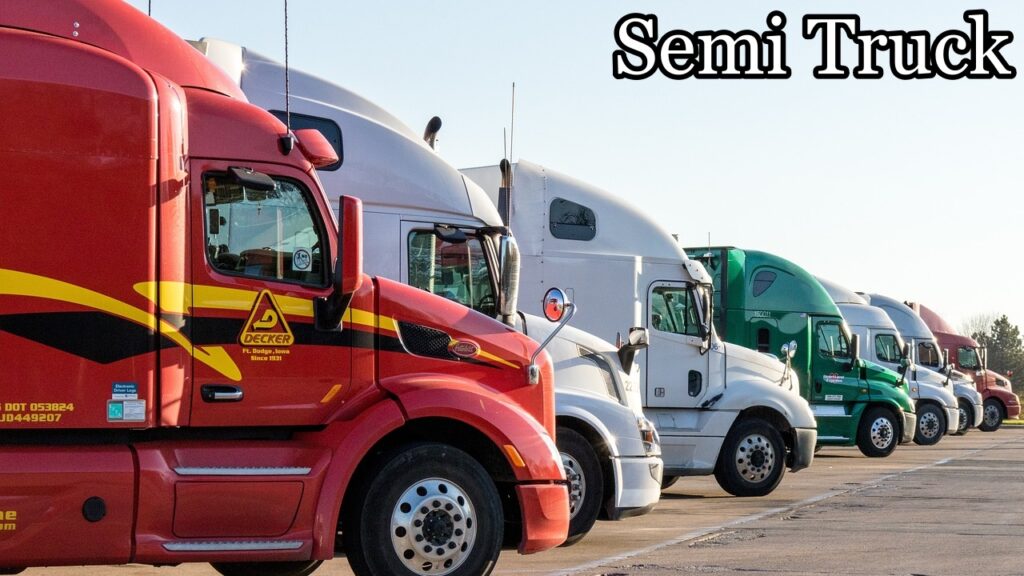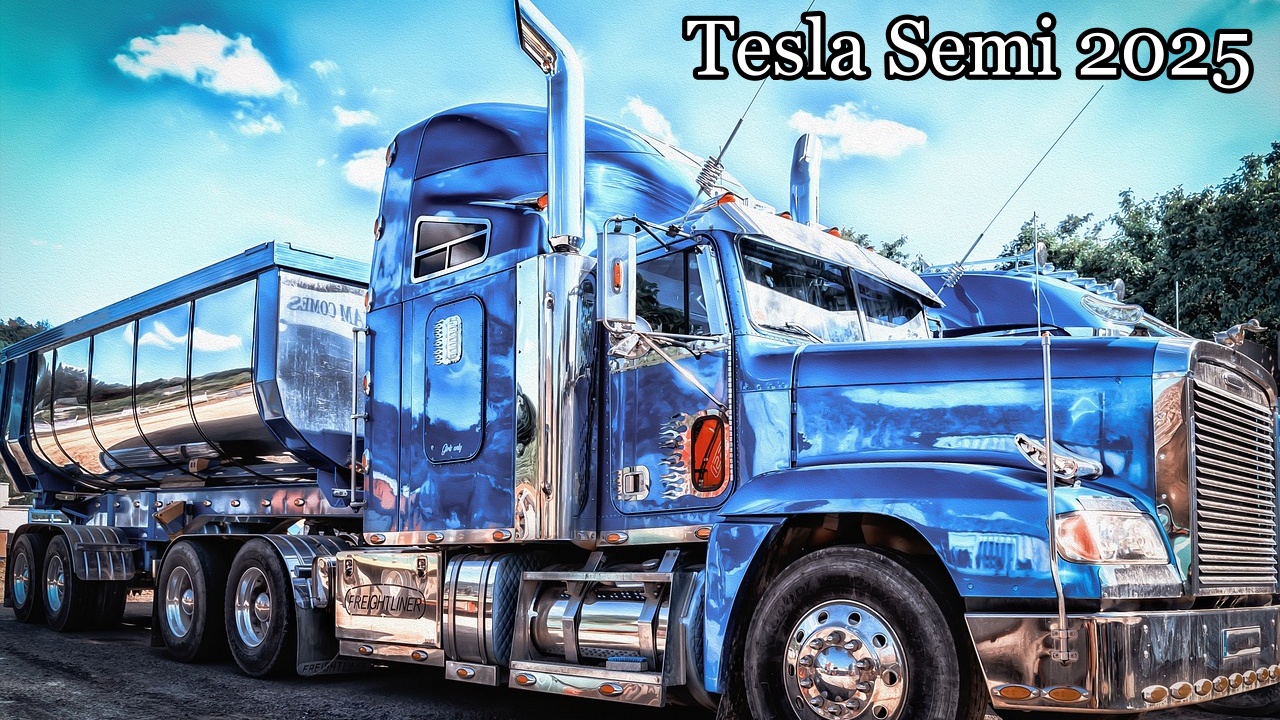The Tesla Semi has already made waves in the electric trucking world, but we’re just beginning to scratch the surface of its true potential. The vehicle has shown impressive capabilities, and Tesla has already delivered several units to big-name customers like Pepsi. However, the full scale of what the Tesla Semi can achieve requires a shift in the entire logistics and manufacturing infrastructure. With 2025 fast approaching, we’re about to see a series of crucial developments that will set the stage for the Tesla Semi’s full-scale rollout.
In this post, we’ll dive into the latest updates surrounding the Tesla Semi, including manufacturing progress, customer expansion, efficiency gains, and what’s in store for 2025.
Tesla’s New Manufacturing Plant: A Giant Step Toward Mass Production
One of the most exciting developments for the Tesla Semi in 2025 is the new dedicated manufacturing facility currently being built next to Tesla’s Gigafactory in Sparks, Nevada. This 4 million-square-foot plant, located at the Tahoe Reno Industrial Center, will serve as the heart of Tesla’s Semi production. Tesla broke ground on this site just last year, and the progress has been swift. As of January 2025, the structure looks impressive, with the factory almost complete and a secondary stamping facility under construction.
This new facility will be crucial for ramping up production, with Tesla aiming to start limited production in the second half of 2025. Volume production will follow in 2026, with a production goal of 50,000 trucks annually. That’s over 130 trucks per day—or roughly one truck every 15-20 minutes. This scale is ambitious, but it’s clear that Tesla is aiming for a serious presence in the electric trucking market.

Is 50,000 Trucks Per Year Enough to Compete?
To understand the impact of 50,000 trucks per year, let’s compare it to the current state of the U.S. trucking industry. In 2023, major trucking companies like Paccar, the parent company of Kenworth and Peterbilt, sold a combined total of 19,000 Class 8 trucks. The entire market for these trucks in the U.S. and Canada reached nearly 300,000 units in 2023.
50,000 trucks per year is a solid start for Tesla, but to be a serious contender, they’ll likely need to double that number over the next few years to compete with the legacy giants. That said, Tesla’s approach is different, and the demand for electric trucks is expected to grow rapidly as more companies move toward sustainability.
Tesla Semi Expands Its Reach in 2025
Even without the new manufacturing plant fully operational, Tesla Semis are already making waves in the trucking world. Over the past year, we’ve seen Tesla trucks rolling out in limited quantities, primarily serving large customers like PepsiCo. But in 2025, Tesla’s Semi is expanding into new territories, with companies like Costco, Walmart, and Martin Brower joining the ranks of Tesla’s growing customer base.
Perhaps the most interesting development is the entry of SEYA, a freight logistics company specializing in less-than-truckload (LTL) shipping. SEYA uses Tesla’s electric trucks for both local and long-haul routes, delivering goods with impressive efficiency—getting as high as 1.73 kWh per mile. For context, that’s more efficient than a Hummer EV and better than many other electric vehicles on the market. This efficiency makes the Tesla Semi a viable option for a wide range of industries, not just those hauling massive loads.
A New Milestone: Tesla Semi Pulls Tandem Trailers
One of the most exciting things to happen with the Tesla Semi in 2025 is its ability to haul tandem trailers. For the first time, Tesla has been spotted running a semi truck pulling two trailers, with one of those trailers towering over the truck’s cab. This capability opens up new possibilities for Tesla in the freight industry, allowing companies like Frito-Lay to double their trucking capacity without adding additional vehicles. The Semi is showing that it’s capable of handling much more than simple transport tasks—it’s ready to take on complex logistics challenges.
Efficiency and Comfort: A Smooth Ride for Drivers
In addition to being highly efficient, drivers of the Tesla Semi have reported that the vehicle is comfortable, smooth, and easy to drive. Tesla’s electric truck excels in maintaining speed on steep hills and offers a driving experience that’s both relaxed and responsive. This is crucial in attracting truck drivers who spend long hours on the road. The Tesla Semi is transforming what it means to drive a heavy-duty truck, making it far more enjoyable and less stressful.
Challenges Ahead: Tesla Semi Faces Its First Crash Investigation
Despite its many advancements, the Tesla Semi has not been immune to challenges. In August 2024, a Tesla Semi was involved in an incident when it veered off the road, smashed into a tree, and caught fire. Fortunately, the driver wasn’t seriously injured, but the crash led to the first-ever investigation by the National Transportation Safety Board (NTSB) into an electric heavy-duty truck.
The NTSB’s investigation is focused on determining the cause of the accident and how first responders can better handle emergencies involving large lithium-ion battery packs. While it’s important to remember that the Tesla Semi’s incident doesn’t reflect the vehicle’s overall safety, it highlights the need for ongoing improvements in both vehicle design and emergency response procedures for electric trucks.
The Need for a Robust Charging Infrastructure
One of the biggest hurdles for the Tesla Semi is the development of a charging infrastructure that can handle the truck’s massive power needs. Mega chargers have been installed at Tesla’s distribution hubs, but the widespread Tesla Supercharger Network needs to expand significantly to support long-haul journeys.
In 2025, Tesla is rolling out its V4 Superchargers, which can output up to 500 kW of power, making them compatible with the Tesla Semi’s 1,000-volt architecture. However, the truck requires 1.2 MW of power for fast charging, so we’ll need to see further developments in charging infrastructure to fully support the Tesla Semi’s growth.
2025: A Year of Progress, But Full Takeover Will Come Later
So, will the Tesla Semi take over in 2025? While we’ll see continued progress and limited growth in the coming year, the true takeover of the electric trucking market won’t happen just yet. The 2025 update for Tesla’s Semi is about laying the groundwork for a larger revolution that will begin in 2026. The new manufacturing plant and expanding customer base are key steps forward, but there’s still much work to be done to ensure that the Tesla Semi can meet the demand and expectations of the freight industry.
Final Thoughts: The Future of Tesla Semi Looks Bright
The Tesla Semi is on the verge of transforming the trucking industry. With new manufacturing facilities, expanding customer base, and impressive efficiency gains, the vehicle is proving that electric trucks are not only viable but superior in many ways to their diesel counterparts. However, there are still obstacles to overcome, particularly in terms of charging infrastructure and safety improvements.
Looking ahead, 2025 is going to be a year of slow growth, but it will serve as the foundation for a much bigger Tesla Semi takeover in the years to come. For now, the future of electric trucking is looking brighter than ever.
Read More:


2 thoughts on “Tesla Semi 2025: Major Updates and Features You Need to Know”